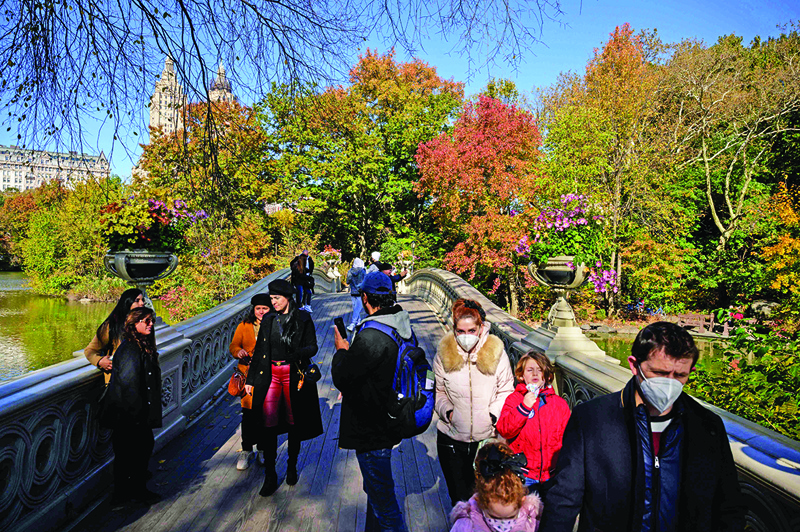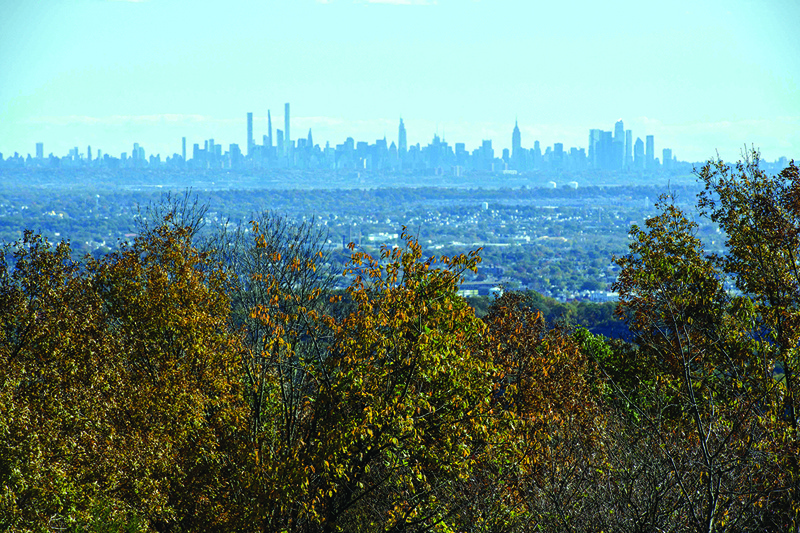America's northeast is famous for its red, orange and yellow fall foliage but experts say climate change is dulling the colors and delaying peak season, causing concern for the region's multibillion-dollar "leaf-peeping" tourist industry. Warmer temperatures and heavier rainfall are keeping leaves greener for longer while extreme weather events like heatwaves and storms are stripping trees bare before getting to autumn, according to conservationists.
"Climate change is making it less likely that we're going to get those perfect fall color displays," Andy Finton, a forest ecologist with the Nature Conservancy in Massachusetts, told AFP. Several delicate factors combine for leaves to turn the vibrant colors that adorn picture postcards from New England and see visitors flocking to states like Vermont, Maine and New Hampshire every October.
The right combination of heat and precipitation in the summer followed by sunny days and cooler nights as the days start to shorten are required for chlorophyll to break down, unveiling the yellow and orange carotenoid pigments that turn ash and birch trees a golden hue. But the more complicated process by which leaves produce sugar that creates the red anthocyanin pigments seen in sugar maple and black gum trees is worrying arborists the most.
A general view shows the New York city skyline from a viewpoint at the High Mountain Park Preserve.Hotter days, coupled with warmer nights and overcast skies caused by increased precipitation are slowing down photosynthesis, threatening those deep red colors beloved by "leaf-peepers." "What you're gonna see is more muted colors," said Finton. Leaf-peeping is a slang term in the United States used to describe the recreational activity of traveling to see and photograph autumnal colors.
Numerous tracking websites try to predict where and when peak fall foliage will occur as it makes its way south through New England, including Massachusetts and Connecticut, and into New York. But ecologists say climate change is pushing the season back, making it harder to predict when the leaves will turn and threatening to shorten the window if it is followed by a quick cold snap.
Stephanie Spera, an environmental scientist at the University of Richmond, is studying the impact of climate change on fall foliage in Acadia National Park in Maine. "What we are seeing is that it is about a full week later than it was in the 1950s," and now arrives around the second week of October, Spera told AFP. Barbara Brummer, a field biologist with the Nature Conservancy's New Jersey office, estimates it was at least two weeks late this year "from what typically might have happened 100 years ago."
Pests and disease
Fall foliage tourism is big business in the northeast. It contributes $300 million to Vermont's economy alone every year, according to official figures. In autumn, upwards of 500 people visit Polly's Pancake Parlor in New Hampshire every day to marvel at the colors on display in the White Mountains. The restaurant has been recording when leaves change color since the 1970s to keep track of how weather was impacting footfall.
"Fall is a huge part of our business and customers would ask, 'When's the best time to visit?" owner Kathie Cote told AFP, adding that she was "definitely concerned" about climate change." Alejandro Bertagnoli, a 31-year-old tourist from Argentina, and his girlfriend visited New York's Central Park in early November and were surprised by how green the leaves still were. "The pictures do seem different from what you usually see. But it's still enjoyable," he told AFP.
Warmer, wetter temperatures are also helping invasive pests and disease live longer and spread further, according to Pete Smith, urban forestry program manager at the Arbor Day Foundation. "There's nothing worse for fall color than a dead tree," he told AFP. Extreme weather events are also wreaking havoc. In September, heavy rain and powerful winds brought by Hurricane Ida brought down trees and knocked leaves off branches.
Ecologists are also concerned by foliage scorch, a phenomenon seen this summer in the western US when brutal temperatures burned leaves brown, stripping them of their pigments. They say carbon emissions must be reduced and forests conserved to protect foliage.
While they acknowledge that foliage may not top the agenda at Cop26, healthy leaves mean healthy forests which are essential for the environment. The leaves that sugars develop into the twigs and stems of trees to provide food for spring. "If you disrupt these cycles, there are impacts that we probably don't even know about, because nature is so complex," said Brummer. Fall foliage is also good for the soul, she added. "When you go out and see beautiful red colors it's joyful." - AFP




